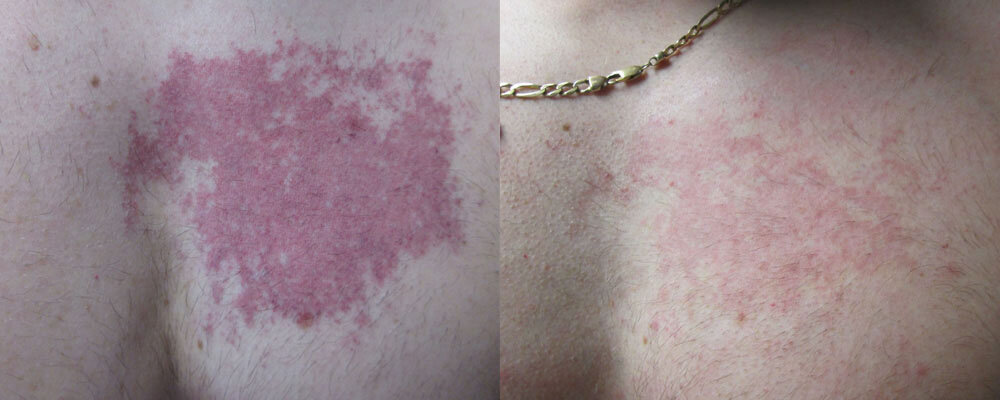Spider veins, which often appear on the face or legs, develop when a group of blood vessels expands near the surface of the skin. While they are usually innocuous, they are unsightly and can keep you from feeling comfortable in your own skin. Our treatment offers cutting-edge technology to allow you to flaunt those legs again.
Spider veins respond to the precise energy level and wavelength of light that is used. The small spot of laser light travels through the skin and is absorbed by the blood within the vein, on the basis of its color. The resulting heat coagulates or clots the blood and collapses the already dysfunctional vein. Over time, the vein will be absorbed by the body and will disappear from sight.
A venous lake (also known as "Phlebectasis") is a generally solitary, soft, compressible, dark blue to violaceous, 0.2- to 1-cm papule commonly found on sun-exposed surfaces of the vermilion border of the lip, face and ears. Lesions generally occur among the elderly but can also be a side effect of trauma..
Port-wine Stain
(also known as nevus flammeus) can be anywhere on the body but most commonly are found on the face, neck, scalp, arms, or legs. This
type of a birthmark got its name because it looks like maroon wine was spilled or splashed on the skin. Though they often start out looking pink at birth, port-wine stains tend to become darker (usually reddish-purple or dark red) with age. .
Port-wine stains won't go away on their own, but they can be treated with laser therapy.
A hemangioma (or a cherry hemangioma) of the skin is an abnormal buildup of blood vessels on or under the surface of the skin. A hemangioma of the skin may look like a red-wine or strawberry-colored plaque, and it may protrude from the skin. They can occur on the top layer of the skin or deeper in the body. Treatment depends on a multitude of factors including size, location, whether or not they’re ulcerated.
.
They look painful, but typically don’t cause any discomfort. After a brief period of rapid growth, they often shrink on their own without treatment. They’re noncancerous and complications are very rare. Ask us if a laser treatment may be a suitable treatment option for you.
Telangiectasia is a condition in which widened venules (tiny blood vessels) cause threadlike red lines or patterns on the skin. These patterns, or telangiectases, form gradually and often in clusters. They're sometimes known as “spider veins” because of their fine and weblike appearance. Common causes of telangiectasia include acne,
rosacea, aging, genetics, pregnancy, sun exposure, or varicose veins. Can be treated with laser therapy.
Other laser treatment available in the office is diffuse redness.









